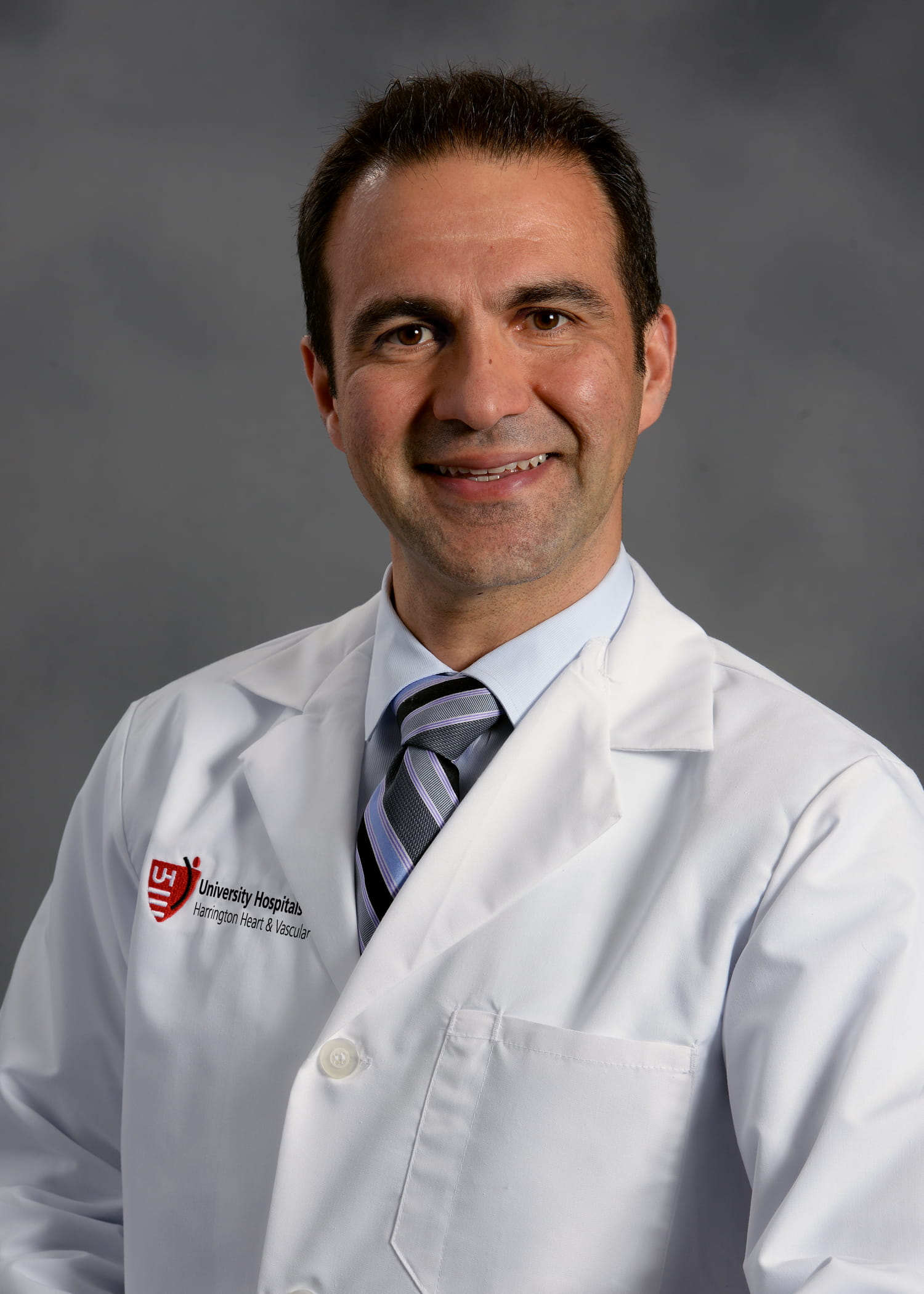LimFlow Offers Hope for No Option CLI Patients
October 24, 2018
Minimally invasive technique provides endovascular venous arterialization
Innovations in Cardiovascular Medicine & Surgery – Fall 2018
 Mehdi H. Shishehbor, DO, PhD, MPH
Mehdi H. Shishehbor, DO, PhD, MPHA breakthrough First in Man (FIM) clinical trial within the Harrington Heart & Vascular Institute at University Hospitals Cleveland Medical Center is offering hope to patients suffering from chronic limb ischemia (CLI), a severe form of peripheral artery disease. Throughout the United States and Europe, 160,000 cases of “no option” CLI are diagnosed annually and every two minutes an amputation occurs because of ischemia-related complications.
Patients with CLI experience significantly diminished quality of life due to ischemic limb pain, compromised wound healing, tissue loss and gangrene. Additionally, the disease is associated with high morbidity and mortality rates — 25 percent of patients do not survive one year following diagnosis. As consumers of healthcare, this challenging patient population also accounts for significant cost burden and increased hospital admissions.
Traditional revascularization attempts are frequently unable to maintain adequate perfusion to the affected limb as occlusion worsens. However, a minimally invasive procedure is offering new hope for patients who have exhausted their treatment options.
The LimFlow Percutaneous Deep Vein Arterialization (pDVA) System, developed by Paris-based LimFlow SA, employs a novel proprietary technique to provide endovascular venous arterialization. “We have a unique chance to make a positive impact on the lives of those we serve and decrease the vexing problem of amputations,” says Mehdi H. Shishehbor, DO, PhD, MPH, Director, Interventional Cardiovascular Center, and Co-Director, Vascular Center, UH Harrington Heart & Vascular Institute; Clinical Assistant Professor of Medicine, Case Western Reserve University School of Medicine.
In April 2018, the team was able to help a 51-year-old diabetic woman who would otherwise have required a second limb amputation. “It took tremendous effort to collaborate with the FDA and LimFlow executives to seek permission to perform this compassionate procedure at UH Cleveland Medical Center — but compassion and offering the latest therapies to our patients is what defines us,” Dr. Shishehbor says. “We were able to divert blood flow from the blocked artery into the vein to salvage her leg and she is doing amazingly well after several months.”
UH Cleveland Medical Center is one of six centers nationally and the only center in Ohio offering LimFlow to end-stage CLI patients.
How Limflow Works
The goal of LimFlow is to redirect blood from ischemic arteries into the tibial veins in order to resupply oxygen to the surrounding tissue. The procedure takes about four hours and involves several steps:
- Under ultrasound guidance, a catheter is inserted through a small incision at the ankle into the vein and another is inserted into the femoral artery at the groin. The catheters are advanced toward each other while the arterial catheter emits ultrasound waves that are received by the venous catheter, enabling the surgeon to align the two catheters at the point of blockage.
- A channel is created via a needle traveling from the arterial ultrasound catheter into the vein and enlarged through placement of a low-profile angioplasty balloon.
- A Valvulotome – a tiny basket with incision hooks – travels through the vein to cut through valves and render them incompetent to maximize arterial flow of oxygenated blood down to the foot.
- Self-expanding covered nitinol stents are placed in the vein to support a high, continuous flow rate.
- A tapered, covered crossing stent is placed to create an arteriovenous (AV) fistula, permanently diverting blood flow from the diseased artery to the vein.
Saving Limbs, Improving Lives
Outcomes from the procedure include almost immediate pain relief, wound healing and remarkable changes in the vasculature of the foot. Patients are spared the trauma and risk of limb amputation and also experience renewed mobility and quality of life.
The LimFlow system received CE Mark approval in October 2016 and a study of feasibility, safety and efficacy in “no-option” CLI patients continues in the United States, with key endpoints including limb salvage, wound healing and one-month survival. Results from worldwide testing at nine international sites have been very encouraging.
Dr. Shishehbor serves on the LimFlow advisory board and recently traveled to Washington, D.C., to meet with FDA officials on behalf of the limb-saving procedure. “This intervention is demonstrating significant potential to transform the standard of care for CLI patients,” he says. “Here at UH, our unparalleled commitment to limb salvage and access to advanced techniques to prevent amputation is recognized worldwide. We are fortunate to partner with device and technology companies such as LimFlow and be among the national leaders performing such therapies.”
For more information or to refer a patient, call 216-844-3800 or email Mehdi.Shishehbor@UHhospitals.org.


